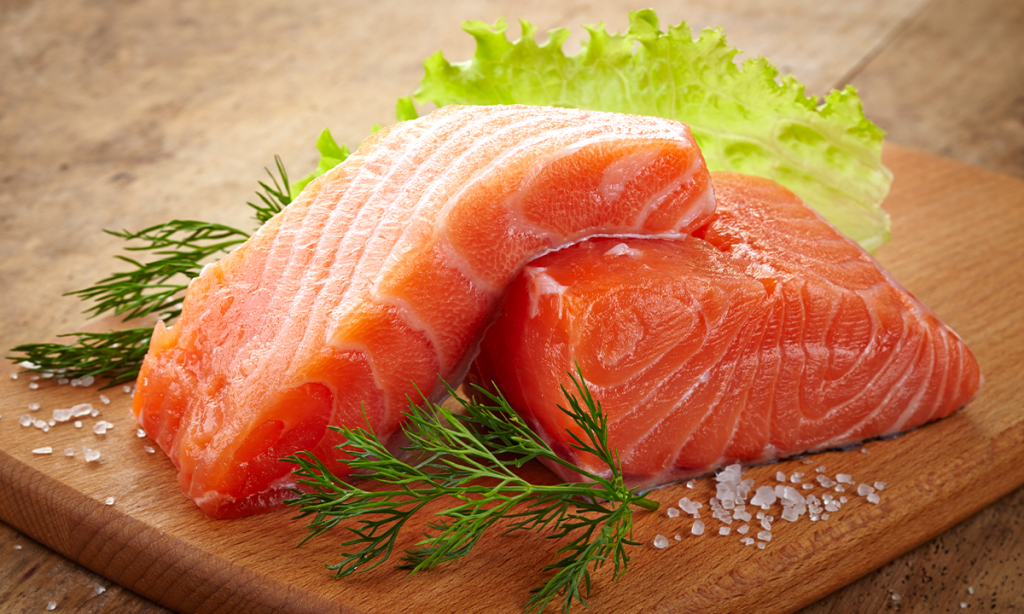Today, it is estimated that 800 million people worldwide depend on small-scale fisheries and aquaculture. According to the World Fish Center, around 3.3 billion people get at least 20% of their animal protein from eating aquatic foods, while 17% of all animal protein consumed globally arrives from aquatic foods1. It is therefore of vital importance that access to aquatic or ‘blue’ foods is available to all nations, particularly those that are nutritionally vulnerable.
Overcoming nutritional deficiencies
Research published in 2021 states that aquatic foods are often undervalued as a nutritional source due to being categorised as a single food type2. Yet there is more than just high protein found in seafood, with a range of nutritents such as omega-3, vitamin B12, taurine, selenium, Vitamin D and phosphorus available in several varieties of fish. So why are we not utilising aquatic foods to their full potential?
The answer in its simplest form is lack of accessibility. Land-based farming practices are deeply ingrained in human culture, with more readily available land and infrastructure suitable for agricultural use. Historically, our ancestors did not have the technical knowledge we now have today to develop large-scale aquaculture systems. Even now, there are many challenges present such as disease management and water quality control that makes it more difficult to extract the nutritional benefits of aquatic foods.
However, our over-reliance on land-based agriculture in our diets has triggered nutritional deficiencies that vary between countries. A recent report from the Blue Food Assessment suggests that 93 countries have at least 10% of their population exposed to nutrient deficiencies – despite access to aquatic foods3.
For example, deficiencies in Vitamin B12 and omega-3 are higher in African and South American communities. Increasing the accessibility and diversity of aquatic foods available to reduce environmental footprints is therefore key to a more sustainable and healthy diet.
Increased focus on innovation
Many parts of the world are now focused on improving production processes of aquatic foods. When up to 35% of the global harvest from fisheries and aquaculture is lost or discarded (around $22.5 billion)4, food producers must begin adopting innovative technologies that focus on reducing environmental impact to facilitate the aquatic food system.
In places like Bangladesh, initiatives like ‘Feed the Future Aquaculture and Nutrition Activity’ are increasing the productivity of aquaculture systems to meet global demand5. In Africa, the ‘FASA’ project is focused on the development and scaling of sustainable feeds to deliver resilient aquatic food systems6. There are also projects that are using innovative technologies to breed a faster-growing strain of wild Nile tilapia7.
At biomega®, we recognise the importance of innovation. Our promise to make a positive impact on the world starts right at the source. By working together with accredited and non-profit organisations, such as Marin Trust, alongside our raw material suppliers, our R&D and quality control teams are committed to driving aquatic food innovation at scale.
Projects like LIFE CONQUER are our answer to sustainably exploiting the side stream of the salmon processing industry to produce salmon peptides and oil for the human nutrition market. Co-funded by the European Union and financially backed by the European Commission Programme for Environment and Climate Action and the LIFE Programme, the project looks at how we can upcycle fresh food-grade salmon parts (including leftover meat, skin and bones) into premium ingredients that can be used in soups, shakes, juice shots and more.
High-nutrient peptides and oils
Like most seafood, bivalve and freshwater fish, salmon is a nutrient-dense food. Not only does it contain lots of protein and omega-3 fatty acids, but it also features vitamins like Vitamin B12, B6 and D, as well as trace minerals such as selenium and potassium. Yet the part we consume – the fillet – often carries only a partial amount of the nutrients found in salmon. When these parts are discarded, all that vital nutrient-dense raw material ends up being lost.
Fortunately, with our 20+ years of expertise in biorefining, our patented production method gently transforms all those nutrients into peptides and oils through an enzyme-assisted process. This means the high nutritional content of the salmon is retained. At our state-of-the-art biorefinery in Hirtshals, we produce our flagship human nutrition product, SalMe Peptides.
This 100% water soluble solution consists of salmon peptides and free amino acids. SalMe Peptides are not just a natural source of protein, but they are also rich in micronutrients like
Vitamin B12 and taurine. Best of all, due to the way they are processed, they are easy to digest, so they can be easily incorporated into functional foods for the consumer market.
Ease of access
Incorporating aquatic foods into consumer diets is much more accessible with companies like biomega® at the helm. With our inclusion in the LIFE CONQUER* project and innovative products like SalMe Peptides, we are striving for a circular economy that reduces impact on the environment wherever possible. Of course, we’re only one part of the value chain. We require others in the seafood industry to step up to the plate and ensure that responsibly sourced aquatic foods are increasingly considered part of the solution to a sustainable and healthy diet. Only then can we make headway on reducing nutritional deficiencies in the worldwide population.
References
1 World Fish Center, Research and Innovation Strategy 2030, 2020
2 Christopher D. Golden et al, Aquatic Foods to nourish nations, 2021
3 Blue Food Assessment, Leveraging aquatic foods, 2023
4 World Fish Center, Research and Innovation Strategy 2030, 2020
5 World Fish Center, Feed the future Bangladesh Aquaculture Activity, 2023
6 World Fish Center, FASA, 2023
7 World Fish Center, GIFT, 2023
*Funded by the European Union. Views and opinions expressed are however those of the author(s) only and do not necessarily reflect those of the European Union or CINEA. Neither the European Union nor the granting authority can be held responsible for them.
